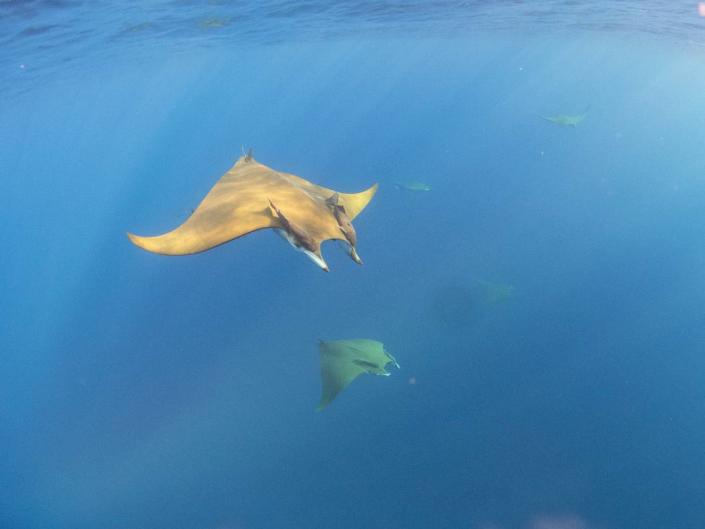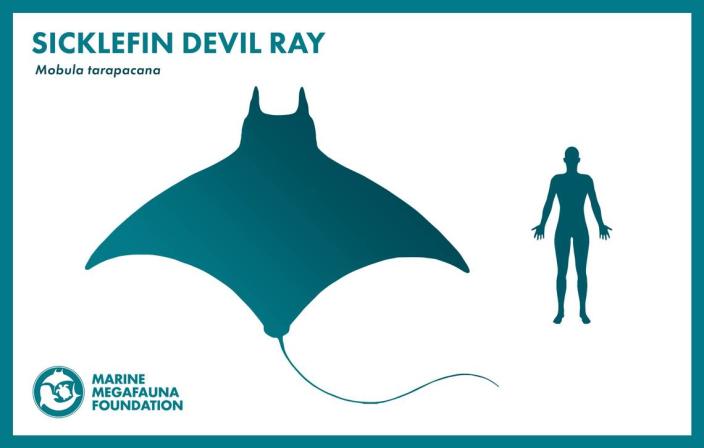An endangered sea creature that has long proven elusive has been documented off the U.S. East Coast for the first time, researchers said.
The slippery creature is a sicklefin devil ray, a giant fish known to dive to depths of 6,000 feet, according to a study published in the Journal of the Marine Biological Association of the United Kingdom.
The rays, which can grow up to 12 feet wide, are believed to dwell in pockets of the sea around the globe, but their presence has never before been confirmed near the United States.
In an attempt to redress the lack of official documentation, researchers affiliated with the Marine Megafauna Foundation, a nonprofit based in Florida, were able to compile sightings of the fish from a variety of sources, including scuba divers, aerial surveyors and social media sites.
“One sighting even involved a video of a devil ray accidentally swimming into a commercial saturation diver’s airline in the darkness!” Jessica Pate, a research scientist with the Marine Megafauna Foundation, said in a news release.

After combining the data, researchers found “180 sightings and 361 individual sicklefin devil rays (which were) gathered between 1996 and 2022 in the waters off the US east coast and Gulf of Mexico.”
Their findings enlarge the recognized range of the rays to include the Atlantic and the Gulf of Mexico.
“People often don’t know that these rays exist — they’ve sometimes been confused with manta rays, which are even more gigantic,” Pate said. “This study shows how non-scientists often make really important observations and contribute to the conservation of endangered species.”
Having up-to-date information on the rays’ habitat is crucial for understanding risks posed by fisheries, researchers said.

The fish are classified as endangered by the International Union for Conservation of Nature (IUCN), according to a 2019 report. While difficult to confirm, their populations appear to be declining.
The rays are fished across the globe, particularly in India and Indonesia, and are often caught unintentionally as part of bycatches, according to the report.
While little is known about their biology, it is believed that they only reproduce one offspring every few years, meaning they likely require ample time to replenish their populations, according to the report.
“This study highlights how incidental observations and observer data can provide vital knowledge on rare, vulnerable, and difficult to study species,” Pate said.
Rare ‘mythological creature’ — an abandoned pet — rescued from Welsh countryside
Young bear hit and killed by car as officials raced to trap it, Florida officials say
6,000-year-old settlement — full of tools and granite structures — found in France
[ad_2]
Source link







